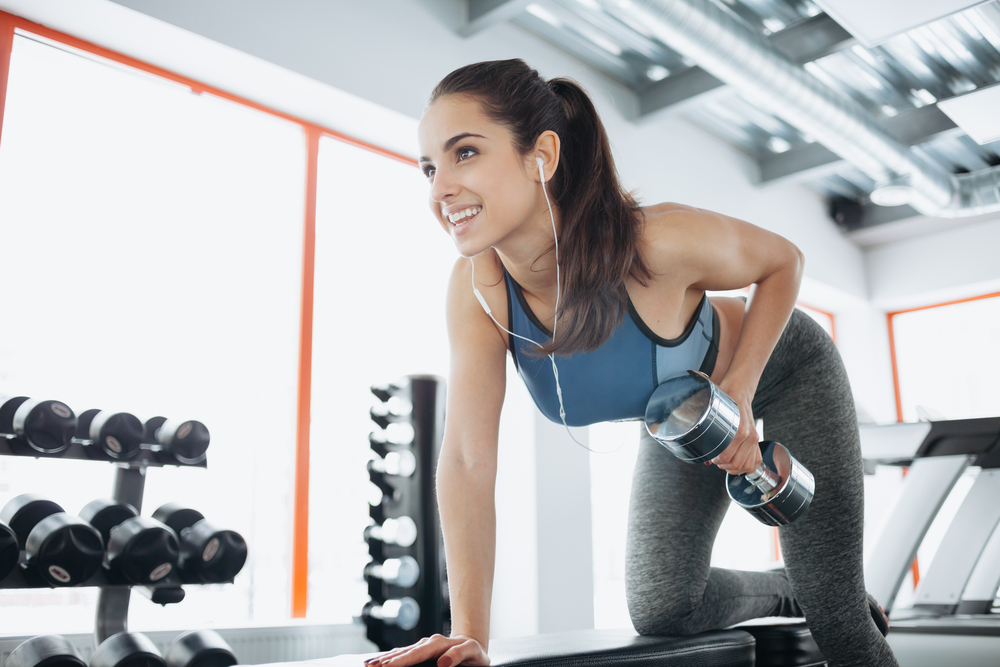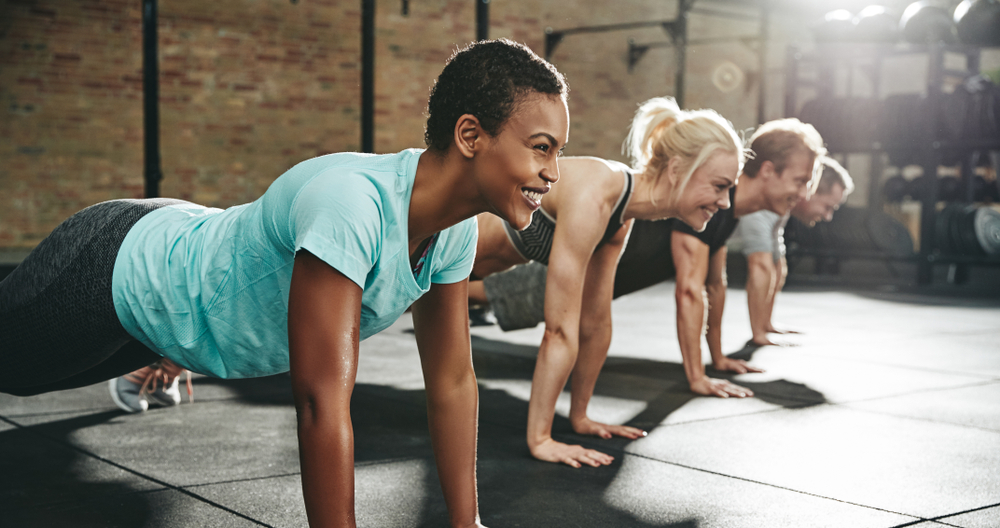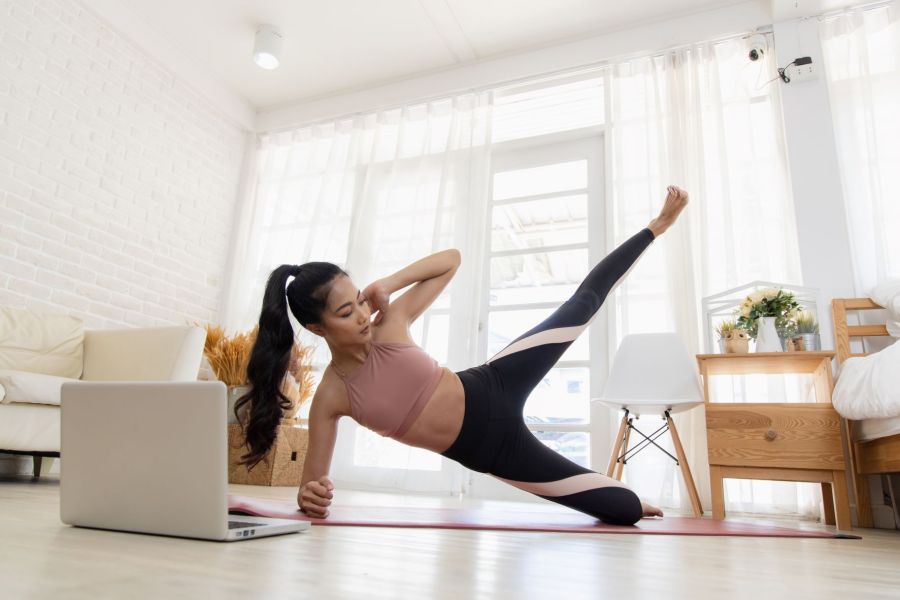Do short workouts really work? In short, yes. When it comes to working out, short and sweet could be the way forward. Here’s why short workouts and fitness classes are just as effective as longer sessions – if not more so…
Some people wrongly assume they have to spend an hour or two in the gym most days in order to get in shape and lose weight. But this is not realistic for many people and it’s often the reason why people fail to stick to an exercise routine.
After the initial burst of enthusiasm that comes with embarking on a new exercise regime, the novelty wears off when the person realises they’re spending far too much time in the gym and not enough quality time with family and loved ones.
Related: How to get fit quickly at home

Do short workouts really work?
Short workouts are often dismissed as ineffective and not sufficient to generate results, but without any good reason. In fact, science actually supports the effectiveness of these short workouts, showing that they do really work.
It also makes sense that most of us can get our heads around giving up 15 to 20 minutes of our busy day to get fitter. Exercise routines that take up less of your time are easier to maintain, which means you’re more likely to stay the course and stick at it. You’ll be more motivated to do it, because you know it’s not going to take up too much time and therefore won’t infringe on too many other aspects of your life.
The seven-minute wonder workout
A study published in the American College of Sports Medicine’s Health & Fitness Journal showed that a fast, high-intensity workout of even as little as seven minutes will produce many of the same benefits as a longer workout. The Center for Disease Control & Prevention adds that several short workouts throughout the day really do work and are proven to be just as effective as one long workout.
So, if you do get windows of time throughout the day, you could spend 15 minutes doing a weights workout and a separate 15 minutes doing a brisk walk or going for a run. You would get the same benefit as if you’d done the two sessions at exactly the same time.
Another benefit of shorter workouts is that they tend to focus the mind. If you know you only have 15 or 20 minutes to exercise, you’ll be less inclined to waste time chatting to other gym goers, or taking longer rest periods in-between sets.
Your workout will be faster, with shorter breaks, as you’ll know time is against you, and therefore your workout will be more intense as you’ll have less time to recover in-between each set. This, of course, means that you will burn more calories overall.

Are shorter gym classes effective?
Many gyms and health clubs are now offering shorter exercise classes, as they know short workouts really do work, and that members want results in less time. Some gyms offer 15-minute abs classes, while others offer classes based on HIIT training principles, such as the Les Mills GRIT class, lasting for only 30 minutes.
These classes focus on increasing fitness and boosting fat loss. So don’t doubt the effectiveness of short workouts. Just make sure you do them regularly. Here are some guidelines to follow:
- Even if you’ve only got 15 to 20 minutes to exercise, always make sure you’re warm before you start. Spend five minutes jogging on the spot, walking or warming up on a CV machine in the gym to raise your heart rate gradually and get your muscles and joints prepared for the activity you’re about to do. Otherwise, you risk injury.
- If you don’t have time to go the gym, you can either follow the workouts in this guide, or devise your own bodyweights exercise session that you can do from home without any exercise kit whatsoever, and do it in a circuit training style. Circuit training can help to reduce abdominal fat, according to the American College of Sports Medicine.
Related: How to warm up for exercise: 10 minute routine
Short workouts: FAQs
Still not convinced? We caught up with the experts to answer some common concerns and myths around short workouts…
Are 10-minute workouts really effective and, if so, how do I get the most out of them?
Joey Bull says: ‘Anything that gets circulatory, respiratory, cardiovascular and other systems moving is of value. This becomes very obvious if you wear a device that gives feedback on your heart rate and heart rate variability – these devices often show how the short moments of intensity can assist restoration at night. Or, conversely, how a few minutes of mindfulness and breathwork down-regulates stress.
‘How effective a 10-minute workout is depends on its contents, but given the right intensity, there are certainly gains to be made in such a short time. If the aim is to get fit and shape up, make those 10-minutes slots work well by rotating which body parts you work over the week. So, every four days, the shoulders get a good push. Another day, it could be legs, and the other two days may work the chest and triceps or back and biceps.
‘Line up four-to-five exercises for each body part and between each exercise, throw in a 20-second burst of explosive moves like sprints, jumps, skipping or step-ups, then repeat. That’ll take you to 10 minutes. If you want shape and definition, this is effective. It isn’t unthinkable to get a full-body workout done within this time, either – simply select exercises that have a push or pull, use two legs, use one leg, and bend and extend.’
Joey Bull is a four times UK Fitness Champion, and PT of 30 years. She’s also an author, dance teacher, former GB adventure racer and flag flyer for the fit 50+.
Do short workouts carry a greater injury risk than longer-duration exercise?
Adam Ridler says: ‘For short workouts, the tendency is often to do a high-intensity “quick-blast” workout, featuring high-impact movements to get the heart rate elevated as much as possible for 10 minutes. This usually means a severe lack of warm-up and cool- down, an exercise selection that might not be suitable for you, and an inclination to rush through repetitions to get as many done as possible, without considering your form. All of these factors will increase the risk of injury compared to longer-duration exercise, where you have more time to warm up, select suitable exercises and perform them properly.
‘If you only have 10 minutes to work out, consider a lighter, less aggressive flow or stretch workout to relieve tension, work on posture and imbalances, and get your body moving in multiple directions. You will still elevate your heart rate, but have significantly less impact on your joints compared to a mini HIIT workout. If you’re intent on doing a more aggressive workout, try to build in a full-body warm-up at the beginning, raising the intensity throughout the workout. Aim to select a smaller number of exercises suitable for you, and focus on technique and quality of execution.’
Adam is an experienced fitness professional. He is a PT and dynamic reformer Pilates instructor, and head of fitness at Ten Health & Fitness.
Are short workouts enough when it comes to managing your weight?
Sarah Campus says: ‘Yes, adding 10 minutes of exercise a day can provide significant health benefits. Simply pick a type of exercise that best fits your schedule and perform it consistently. It’s all about moving your body with a purpose; getting that heart rate up, releasing endorphins (happy hormones), reducing cortisol (stress hormone) levels, boosting your energy levels, raising your metabolism, and getting it done.
‘Ten minutes is completely manageable for most people. The exercise can be anything from yoga or strength training, to high-intensity interval training (HIIT), low-intensity interval training (LIIT), swimming or walking. The 10 minutes should be planned, though, and ideally not random workouts done here and there. It’s better to follow a programme that’s suited to you and your goals.
‘To get 10 minutes of consistent exercise to manage weight, it’s essential you are also in a calorie deficit (i.e. burning more than you are consuming) so you will need to combine it with balanced nutrition, ensuring you eat enough protein, carbohydrates, fats and vitamins, but not over eating as then you won’t be in the calorie deficit. It’s about the whole package – exercise diet and being consistent.’
Sarah Campus is a PT, nutrition coach and founder of LDN MUMS FITNESS, a holistic wellness solution encouraging all women to make health their priority.
Will short-duration yoga benefit the body and mind?
Jaime Hepburn says: ‘Any amount of yoga is beneficial, no matter the time. The effects on body and mind will be palpable even with just 10 minutes. Yoga is a breath-centred practice, and its point is not to pretzel yourself into the deepest shape but to fully immerse yourself in the present moment and focus on your breathing. Consider how you feel when closing your eyes and simply taking three deep breaths. It takes less than 20 seconds and its calming effects are almost immediate.
‘The most important thing to do when short on time is to consider what might be most beneficial to you. Assess how you’re feeling. Are you feeling anxious or unsettled? Ten minutes of pranayama (breathing exercises) can help regulate your nervous system. Have a big meeting later? Ten minutes of meditation will clear your head and help you focus. Perhaps you’re just feeling stiff or low in energy – 10 minutes of gentle asana can help with poor posture and sluggishness.
‘Tap into how you feel and let it guide you. This knowing becomes clearer the more often we practise. When we quiet the mind, the right way often reveals itself. When we practise with intention, our body and mind
will feel the benefits.’
Originally from LA, Jaime set up The Yoga Library, an online and intuition-focused platform, after experiencing the transformation the practice has in her life.
If you have a question for any of our experts, please email it to wf.ed@kelsey.co.uk.
Best short workouts to try:
Try these moves – do each exercise for 45 seconds, take 15 seconds rest, then move to the next exercise and repeat the circuit two to three times, depending on how much time you have…
- Squats
- Press-ups (box press-ups on your knees are fine if normal press-ups are too challenging)
- Shoulder press (two bottles of water or a resistance band will do if you don’t have dumbbells)
- Bench dips
- Abdominal crunches









